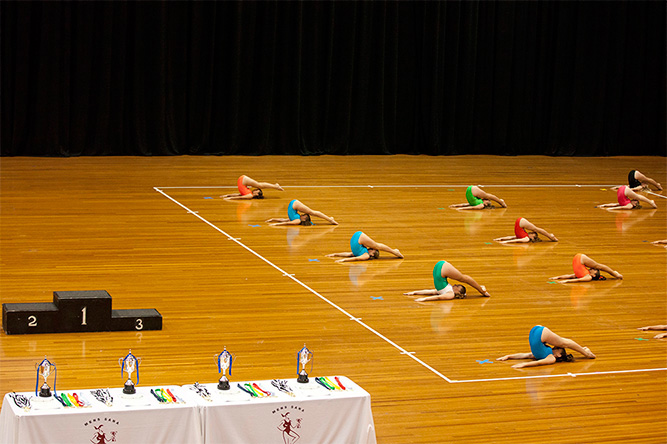What kind of photographer are you? How would you describe your style? Are there particular photographers or traditions you have studied?
I work from life in the documentary/reportage tradition. I shoot things as I find them. I tell stories. I’m open to the exotic but I believe in shooting every day things as well – the things other people sometimes ignore because they are not obviously photogenic. I have an ongoing series photographing Parramatta Road for example. It is about giving quality attention to whatever is around. Access is a big component of my work. If someone will give me access to their life, sport, space, that is all I need in order to get to work.
What sparked your interest in physie?
My sister and I went to physie in a hall in South Maroota before I hit primary school age. I was never good enough to compete but I have a photo of us in spotted leotards and matching leg warmers getting ready to attend one day. And I have vague memories of marching around a hall a lot but I wasn’t sure why. Part of what interested me in this project was filling in those gaps.
Physie is everywhere: in rural towns, in cities, in suburbs, in affluent and non-affluent areas. It encompasses Australian females of all ages. The sport itself is a unique snapshot of Australian women, and when they all come together from everywhere for competitions it is pretty unique.
I also have a close friend who is a talented physie performer and we’d often talked about how it had all the ingredients for a great documentary work. She was really helpful in approaching the Bjelke-Petersen School of Physical Culture and helping me secure access to the competitions. She basically made sure that 2012 was the year I made time to finally shoot it.
Physie is found in most places but nobody has ever documented it in this depth before. There was a photographer from the Sydney Morning Herald who shot the finals last year and made a short video about it. So it appealed to me because it is an everyday, common occurrence, a uniquely Australian sport and also because I was wanting a series with a start and a finish date – something a little easier than Parramatta Road to complete. Physie has colour and drama and beauty and I think it is a little mysterious. I liked all these aspects.
There are several physie competitions. Which one have you documented?
I started in the second half of the year at two interclub competitions then shot my way through repechage, teams, junior finals at the Olympic Sports Centre and Senior Finals at the Opera House. I attended a lot. Each has a different flavour.
[portfolio_slideshow]
What have you learned in the process of making these photographs?
I think a lot of people who lose contact with the sport consider it to be something that children do but most performers peak in their mid-20s. And there are diligent physie members who continue well into their 80s. It is a sport that adapts to people throughout their entire lives.
It’s also really, really old as an Australian fitness institution but not that well known. BJP began in 1892 as a medical gymnasium in Hobart and has tailored itself to Australian society ever since. That’s impressive. There are historical photographs and performance pictures but nobody had followed the story backstage, through the suburbs, up to the Opera House, yet. It was an irresistible project.
In photography, this was the first short-term project I’ve worked on and the first series I consider complete (though I could continue shooting it indefinitely …). I learnt that there are untold stories all around us and that it is important to do short-term projects between the longer ones.
When will the awards be announced?
The winner of the photography section will be announced in the first week of March. They receive a professional mentorship from Polly Borland – a very interesting photographer – $5,000 in flights and $5,000 cash. It basically ensures there are no excuses not to do well with your next project.






